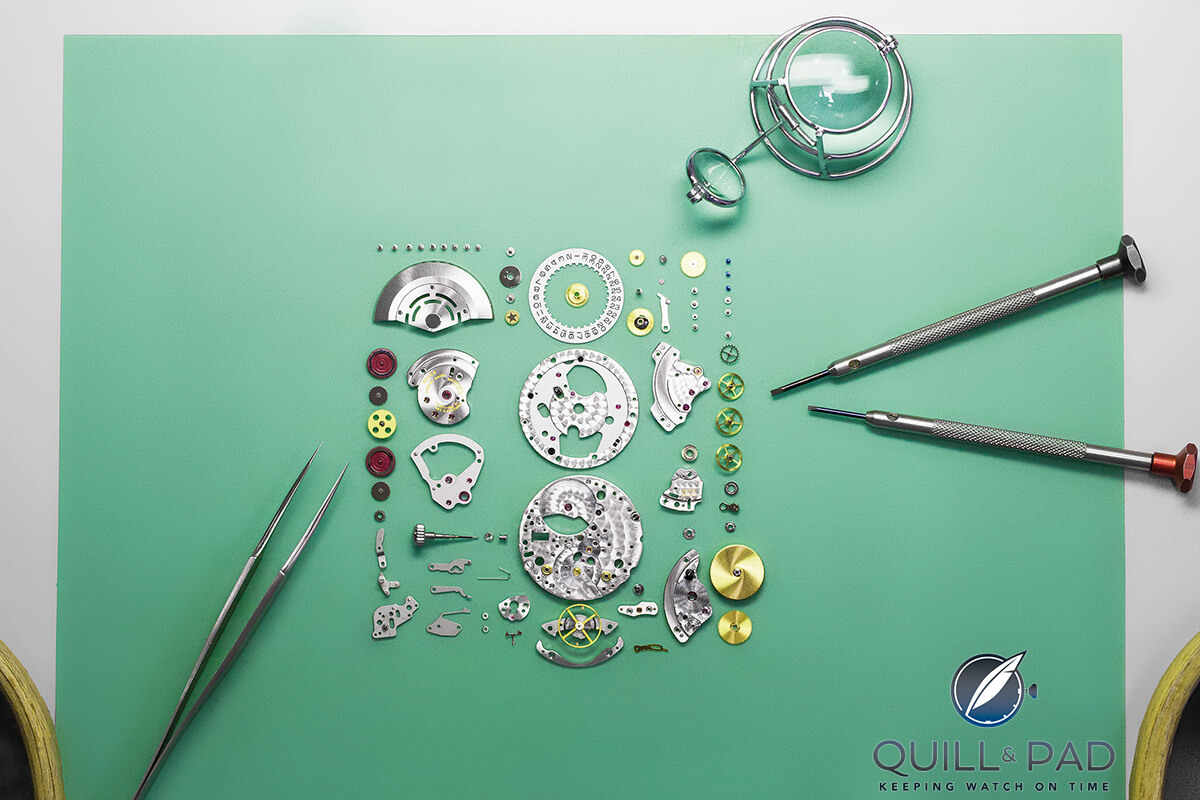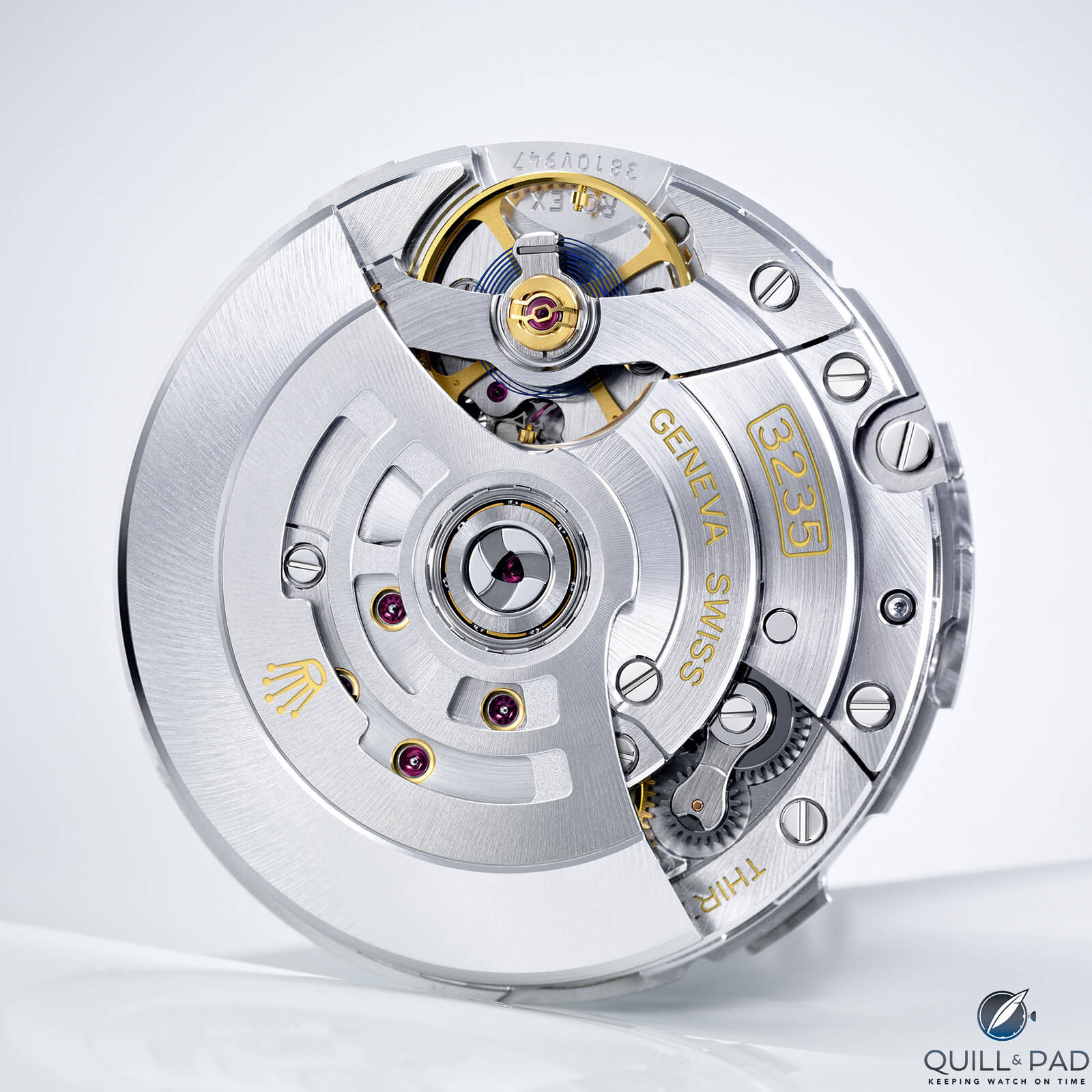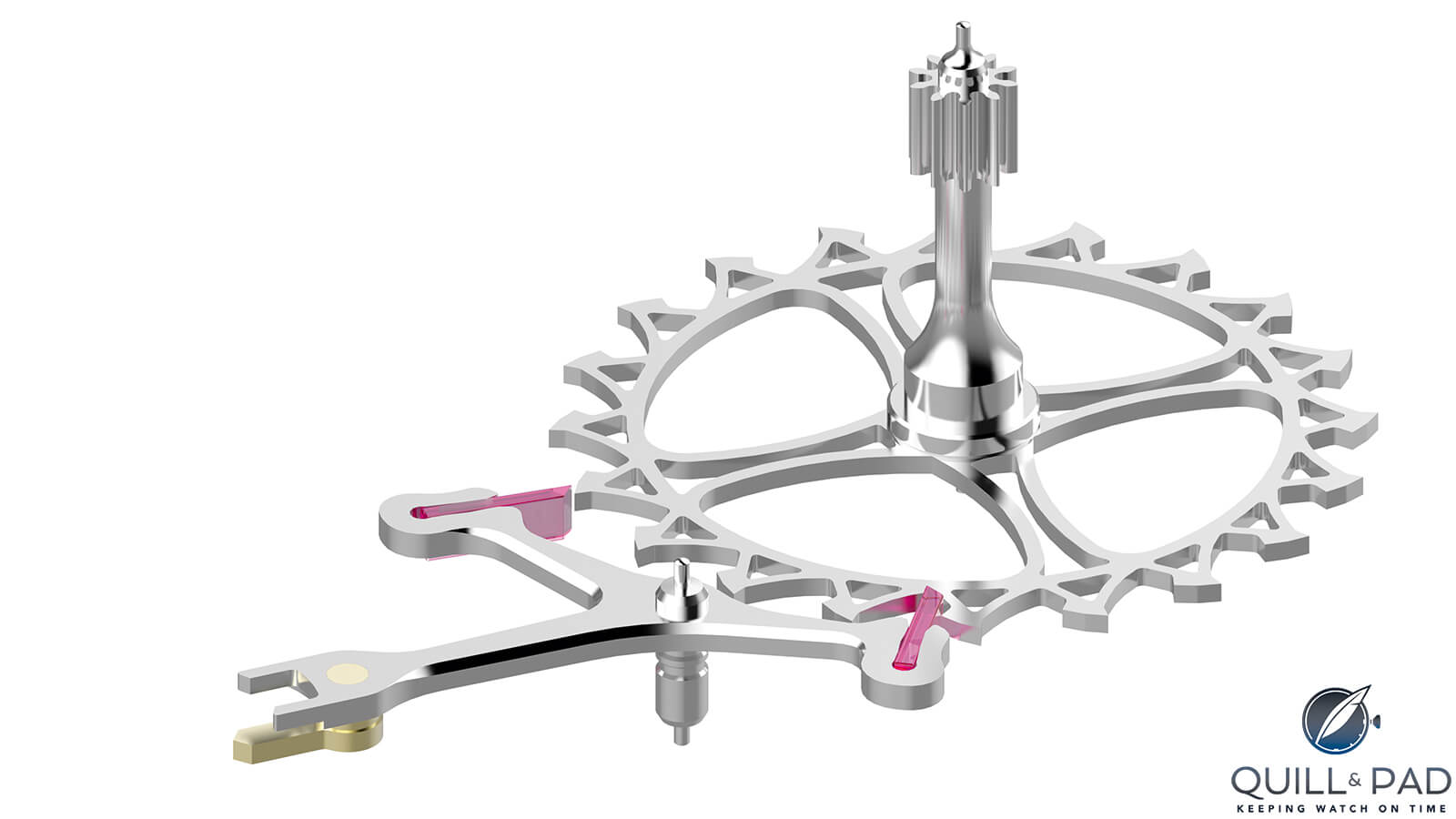—————————————————————————————————–
The Rolex Chronergy escapement in Caliber 3235
The first way Rolex has managed to increase power reserve is via the Chronergy escapement, a modern take on the Swiss lever variation. The escape wheel is pierced, which makes it lighter, and this in turn reduces inertia.
The pallet stones “are half as thick” as in the 3135, but the contact surfaces of the escape wheel have doubled in size. Escapement elements are no longer in alignment but “offset to increase the lever effect.” The escape wheel and pallet fork are made of nickel-phosphorus (LIGA) to avoid interference by magnetism.
Rolex Chronergy escapement
All these modifications help to increase the efficiency of the escapement by 15 percent and account for almost half of the increased power reserve. Or so they say.
Let’s break it down by firstly discussing the claim of a 15-percent performance increase. The LIGA-formed pierced escape wheel is a step up; its inertia will be reduced and therefore does not require as much energy to start up at every beat, so an increase in performance is really there.
Secondly, Rolex claims that halving the thickness of the pallet stones (we presume that means width) and doubling the contact surfaces of the escape wheel leads to an increase in efficiency, along with all the other factors, but without providing an explanation as to why.
The overall contact surface is exactly the same if one had been doubled and the other halved, so friction would not be reduced, leaving you with the same degree of efficiency as a regular Swiss lever in that aspect. The pallet stones being halved in width would reduce drag due to oil viscosity, which would improve power delivery to the balance, which is an increase in efficiency.
The escapement geometry is a little trickier to quantify. Rolex claims “the escapement elements are no longer in alignment but are slightly offset to increase the lever effect.” Without receiving further clarification about precisely what that means, it’s difficult to judge the truth of this.
The claim of avoiding magnetism is well founded, although the pallet frame in the 3135 is also nonmagnetic. Trust me, I’ve spent plenty of time on the ground searching for dropped ones! A step up to an nonmagnetic escape wheel is a good thing because a steel escape wheel retains its magnetism even after it has left the field of interference.
Having compared the two, I still believe the Chronergy escapement to be a move in the right direction. It may have claims that are difficult to verify, but it definitely has improvements in efficiency and power reserve and most importantly it doesn’t adversely affect the customer.
Escapement checks are still performed as normal and adjustments would be made in a similar manner; also, components don’t wear any more quickly than in a regular lever escapement. If we keep score, it would be 1-0 in favor of the 3235.
High-capacity barrel
The second way the added power reserve has been achieved is via the barrel. Larger diameter barrel = longer mainspring = longer run time. That’s the formula followed.
However, to keep size down the barrel wall thickness has been decreased by half so as not to make the movement excessively large.
Clever engineering, I must admit. When next to the 3135 this does seem like a step up. But we must always ask at what cost.
The wall being decreased by half means that changing the mainspring is no longer an option. There is no safe way to remove and reinstall the mainspring without damaging the barrel.

Rolex Caliber 3135 disassembled; note the red Teflon-coated gear wheels (photo courtesy The Watch Gallery)
If a 3135 had a mainspring grinding along the barrel wall, the fix was simple: remove the mainspring, polish the bridle, lubricate the barrel wall, and reinstall. But this is no longer the case with the 3235: it’s replace, replace, replace.
You will be told that all new barrels work right out of the packet, but this is rarely the case for any caliber. Typical complete barrels regularly need adjusting when new due to mainspring bridles not being polished correctly, causing the watch to knock.
So the replace mentality isn’t always the best option. A barrel can outlast a mainspring by many years. That family heirloom you were leaving to your grandchildren is now at the mercy of the manufacturer. How long will parts supply be supported – 30, 40, 50 years?

Rolex Caliber 3235
Another factor to consider is that the 3235 has a movement diameter of 28.5 mm. Let’s compare this with a 4130, the in-house Rolex chronograph movement, which also has a power reserve of 70 hours.
There is no Chronergy escapement here; Caliber 4130 contains a standard lever escapement. Admittedly, it is 2 mm larger in diameter, coming in at 30.5 mm; however, it incorporates a three-register chronograph.
How did Rolex achieve this this feat? By installing a longer mainspring into a barrel with regular-sized walls. This barrel doesn’t need replacing every service – a new mainspring will do just fine.
So why couldn’t this have been an option for the 3235? Perhaps to make the servicing and the acquisition of parts more difficult? Perhaps there was truly no more space to install a larger barrel? I’ll let you be the judge of that one.
Increased power reserves are definitely a win for the customer: people don’t enjoy having to set their watches frequently, which can become tedious.
Additionally, the less the wearer has to adjust his or her Oyster watch, the less likely water-resistance problems will arise. I have no issue with a modern caliber outlasting an older counterpart by many more hours, but I do take issue with the way it has been achieved in this particular case.
Now we’re tied at 1-1.
—————————————————————————————————–
Credit: Source link
